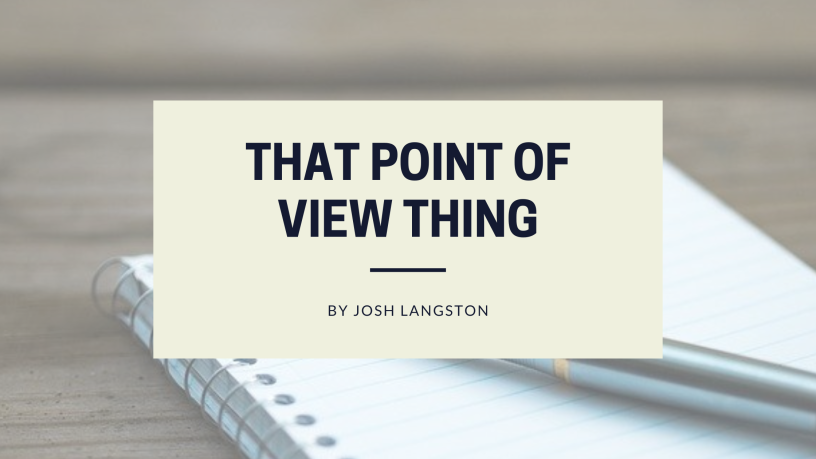Television and the movies have had a tremendous impact on the way we perceive things. It’s rare when a TV show or film allows the viewer to see only what one character sees. And yet, such a limited viewpoint is often touted as a principal means of linking reader and character. You only see what that character sees, only know what she’s thinking, only feel what she’s going through.
Film ignores all that. There’s a well-known scene near the end of “The Good, the Bad, and the Ugly” in which three of the main players face off against each other in a cemetery. The camera switches from an extreme close-up of one gritty character after another, switching faster and faster as the tempo of the music builds. Who’s going to shoot first? Eyes squint; sweat beads on foreheads; jaws clench. It’s quite suspenseful and dramatic. But it wouldn’t work all that well in a book.
You can choose to put your reader in the head of a single character or in the heads of all the characters in your story. The second option is the only one which would allow a reader to “see” all three of the faces mentioned above. If limited to a single viewpoint, only two faces could be examined, unless the point of view character is looking at a reflection.
So, which viewpoint option is better, omniscient or limited? I prefer limited, and I believe most commercial fiction today is done that way. But there is plenty of well-read material that isn’t. I suspect this is not the result of a consciously made decision. I’m guessing it was simply easier for the writer to proceed that way, and in light of the impact TV and movies have had on us, it was done without any forethought at all.
Well then, one might ask, if limited viewpoint is harder to do, why do it?
[Want to know where your book is falling short? Get a free book coaching sample.]
Because it gives the writer more options. If the reader knows what every player thinks at any given moment, the options for suspense become limited. Will Mary leave John? If we’re in Mary’s head, we already know the answer, but we don’t know if John does unless he somehow communicates that knowledge. As a writer using limited viewpoint, you can choose to dwell in John’s head, stewing over what decision Mary will make. And when she finally does show her intention, it’ll give John’s reaction more punch.
Another issue of concern when using omniscient viewpoint is the possibility of overdoing it. Constantly switching back and forth from one character to another can be tiring and has often been compared to watching a game of ping-pong. Mary thinks this. John thinks that. Mary decides this. John decides that, etc. Neck pain ensues.
Dedicating yourself to one viewpoint character doesn’t mean you can’t use others. It merely limits you to one per scene. Many popular novels feature only one POV character for the whole book. That’s fine, too, although personally, I’d chafe at such a restriction. I like seeing things from the bad guy’s perspective now and then. The same goes for the heroine’s lover, and maybe her boss, or even a grandparent. I’ve been known to use non-human viewpoint characters as well, dogs in particular. (Who wouldn’t want to know what’s really going on inside a canine brain?) Non-human viewpoint characters are pretty common in works of science fiction and fantasy.
In my writing classes, I often ask students to draft scenes from the perspective of a non-living entity. Their responses have included a clock, a rental cabin, and a host of other items. It’s just for fun, but it serves a purpose. It’s a quick way to gain an understanding of the technique.
Josh Langston is a graduate of Georgia State University with a degree in journalism, Josh’s writing tastes quickly shifted away from reportage. His fiction has been published in a variety of magazines and anthologies, and he currently has two short story collections in the Amazon top 100 for genre fiction.


Good article. As a writer of both fiction and travel articles. I like the idea of fiction from mainly the main character’s pov but also like to occasionally like to let readers into another character’s mind in a different chapter usually. As a travel writer, I have written two articles for different locations from an animal’s pov. In one for a county trying to protect manatees, I wrote as a young female manatee mother. In another about a dog show, I wrote about traveling from a dog’s pov. Lots of fun and made me think outside what a human normally thinks about things.
LikeLiked by 1 person
I tend to head hop, which apparently is a big no-no and makes readers angry. I haven’t found a happy medium that satisfies me as a writer and pleases the readers.
LikeLiked by 1 person